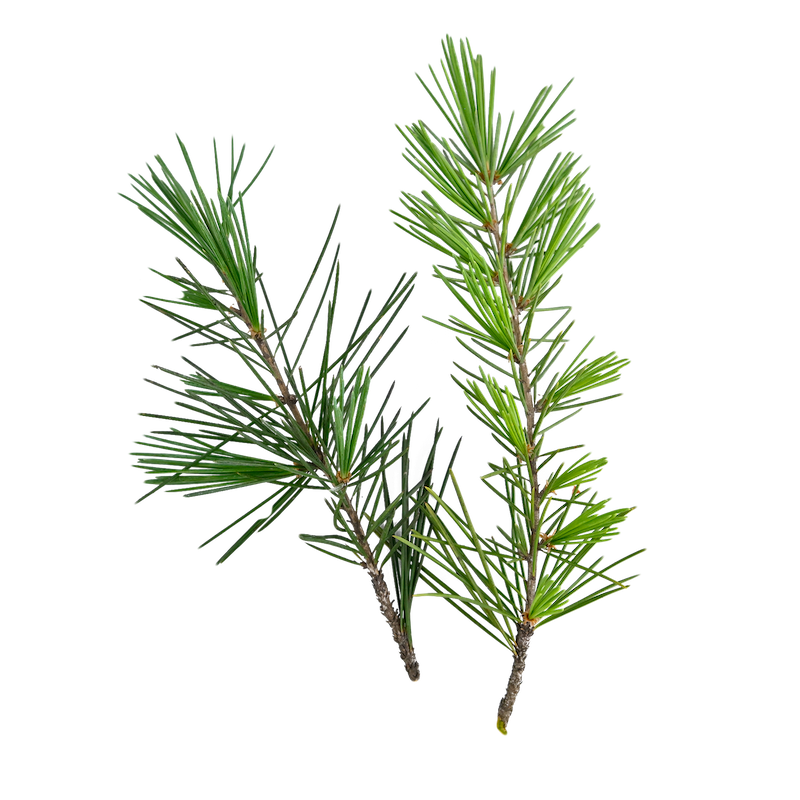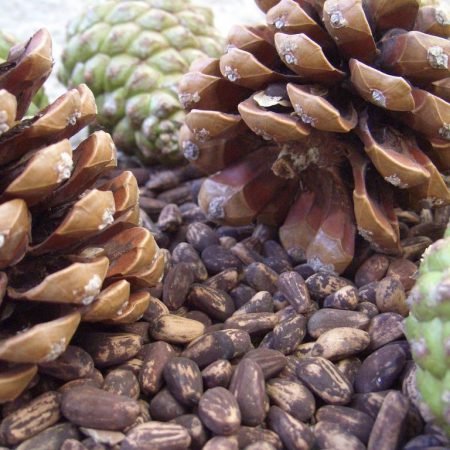
Pinus pinea is a species native to the European Mediterranean area that receives different names depending on the place, although its most frequent name is Stone Pine. The stone pine reaches between 20 – 30 m in height and up to 1.5 m in trunk diameter, and is characterized by its globose crown. It is a species that requires a lot of sunlight and is resistant to strong winds and even sea winds, and is characterized by high phenotypic plasticity, hardiness and tolerance to a wide range of places. From the biological point of view, it is a tree of difficult clonal propagation, the productive stage begins late between 15 and 20 years; it is pollinated by means of the wind, the maturity of its fruit takes 3 years, being found at the same time in the tree pineapples of 1, 2 and 3 years of age, and it is a species that can reach ages between 100 and 120 years. It is considered an isolated species in genetic terms, with low aptitude to hybridize with other pines.

The Stone Pine has a wide variety of applications, the best known is the production and marketing of pine nuts, its wood is also widely used as it is flexible and light. It is used as an ornamental plant, forming part of the gardening of the Mediterranean coast. It has traditionally been used as a medicinal plant, as fuel, for crafts, in the production of resins and for environmental protection.

The piñon, as its fruit is known, is highly appreciated as a dried fruit and is one of the nine most important dried fruits in the world, since it has interesting nutritional and healthy properties. It is the most exclusive and expensive dried fruit on the international market, with a continuous and exponential increase in its demand.
Stone pine wood has a pleasant appearance, with a marked grain, sometimes dark, and a brightness that varies between dull and medium, and its texture is fine and homogeneous, with a straight grain. It is rich in resin, and has a characteristic lemon scent. Its wood is little appreciated, however it is used in multiple uses, such as:
The shells of the pinion and the pineapple remains are used as bioenergy, since 56.3% of the pineapple corresponds to biomass and has a high caloric power.

The Pinus pinea it is characterized by being a very resistant tree, despite not requiring as much care and maintenance as agricultural crops, it also needs some characteristics of the climate and the soil. It has traits that have allowed it to spread over a wide variety of regions with very different climates and altitudes.
The stone pine grows best in deep, sandy, aerated soils with some organic matter, although it can also establish itself in thinner soils with few nutrients. In its areas of origin, it stands out for its role as colonizer and stabilizer of soils with incipient or eroded profiles. The species usually develops better in siliceous textures, tolerates a certain amount of carbonates well, and can be found in soils with a pH between 4 and 9. It also has a high tolerance to hydric stress and water salinity, presenting low survival rates in very heavy soils prone to flooding.
In its natural habitat, the stone pine manages to develop in both warm temperate and cold temperate climates, reaching its optimum development in environments with average temperatures between 12 and 15º C. It is resistant to high temperatures and can withstand long periods with absolute minimum temperatures. higher than – 15 º C. The species is adapted to rainfed conditions, supports annual rainfall from 250 mm to 1,500 mm, and its optimum range is between 500 and 800 mm. Its thick bark and a crown far from the ground make it survive forest fires.
The stone pine can be found in a wide range of altitudes; from sea level to 2,500 meters above sea level, although some authors claim that it only grows up to 1,000 meters above sea level and rarely exceeds it.